China needs to be thankful to India while being proud of their rich Culture and History, Why?
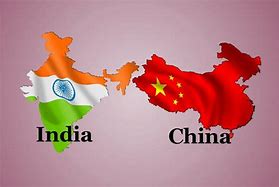

Watching “Dr. Kotnis ki Amar Kahani” a movie by the famous film maker of yesteryears V. Shantaram on a screen at a ‘puja pandal’, was one of my earliest memories of china as a child, during late seventies. The next day, I started asking questions to my well-read grandfather about this great Doctor of India. His answers to my innocent questions were answered but they had a tinge of sadness and bitterness. Upon further probing about the Sino-Japanese war where the whole story unfolded and the love and friendship between India and China, my grandfather cautioned me not to get carried away by the film and said would understand the real story when I grow up. My questions stopped but left infinite number of questions in my mind. It was few years later that I could understand the bitterness in the voice of my grandfather when I learnt about the Chinese backstabbing in 1962.
During my college days when I started reading draft research papers on history by some elders, the fog created in my mind due to the history text books started getting clearer and clearer. I observed that never in the history of both the nations there was animosity, militarily or politically. Neither of these great ancient cultures ever fought each other, rather were influenced, more from India over the Chinese. Historically, from the cultural point of view, it has been one sided. India and China are two of the oldest civilizations having peaceful coexistence for over two millennia. Perhaps they didn’t have many wars due to the Himalayas. Though China had been benefited from India culturally, but India hasn’t got much contribution from China side. It is not that Chinese philosophers never came to India, they did (especially during Kushan rule), but they failed to leave any significant imprint behind. We see a huge competition today- a competition of becoming super power and huge political and territorial disputes, so, I doubt if Indians are going to get any benefit any soon from the Chinese side.The Chinese, were always proud of their civilization and looked down upon the outside world with contempt. They called the tribes living to their North “Hun slaves,” and the tribes living to the North-West “barbarians,” while the Japanese were denominated by them as “Dwarf Pirates.” But their attitude towards India was different. India was known to them by a number of names, not one of which was contemptuous. She was called Hsin Tu, the Kingdom of the Hindus, or Ti Yu, the Western Land, to Buddhists she was Fu Kuo, the Land of the Buddhas. When many historians speak of an earlier ready-made culture coming to China, they are right. That was the Vedic Hindu culture from India with its Sanskrit language and sacred scripts. The contemporary astronomical expertise of the Chinese, as evidenced by their records of eclipses; the philosophy of the Chinese, their statecraft, all point to a Vedic origin. That is why from the earliest times we find Chinese travelers visiting India very often to renew their educational and spiritual links. The introduction of Buddhism to China was one of the most important events in Chinese history.
The cultural relations between India and China can be traced back to very early times. China as a region and Chinese as a race finds mention in Vedas, Ramayana (Kishkindakanda), Mahabharata (BhishmaParva, ShantiParva and VanaParva), Puranas (Vayu Purana, Brahmanda Purana and Matsya Purana), Buddhist literature (Milindapanho, Manasollasa and MudraRaksha). Amartya Sen,Nobel Prize winner, writes in the Times of India: “It is not often realized that even such a central term in Chinese culture as Mandarin is derived from a Sanskrit word, namely Mantri which went from India to China via Malaya”.
Hinduism as a religion has a very limited presence in modern mainland China, but ancient Chinese records as well as modern archaeological studies suggest some ideas of Hinduism were adopted in several regions of China, In the 6th century CE, the royal family was Hindu for two generations. Vedic practices of ancient India such as yoga and meditation are/were also popular in China. Hindu community, particularly through Tamil merchant guilds of Ayyavole and Manigramam, once thrived in medieval south China; evidence of Hindu motifs and temples, such as in the Kaiyuan temple, continue to be discovered in Quanzhou, Fujian province of southeast China. In Yunnan, the discovery of linga and yoni (Shiva deity icons) in Jianchuan caves (Shizhongshan) and Hindu idols and temple parts found during excavation of Dali temple in Yunnan speaks volumes about Hindu influence on ancient China. The Chinese texts from the 2nd through the 12th centuries AD suggest translations of various Hindu Sanskrit texts into Chinese. Vedas were referred to as ming-lun’ (science of knowledge) or zhi-lun (science of intelligence). Some original Sanskrit texts which have been completely lost, whose translation have been traced in China – for example, Jin Qi Shi Lun is a surviving translation of Sankhya-Karika. Yijing’s translation of Harivamsa, a well known account of lord Krishna, in which he translated hymns meant for goddess Durga, but associated them with goddess Sarasvati, paved the way for diffusion of the Chinese Biàncáitiān, and from there diffused to Japan as goddess Benzaiten(辯才天) – whose temples are still found and remain in use in Japan.
Buddhism first came to China from India via Central Asia in the 1st century A.D. But it was never accepted in its true form in China. However as interest grew, there was a great demand for Buddhist texts to be translated from Indian languages into Chinese. This led to the arrival of translators from Central Asia and India. Hundreds of Indian religious teachers went to China between the first to the twelfth century. They left China some 3,000 scriptures translated from Sanskrit into Chinese. The Yuechi rulers presented Sanskrit texts to the Chinese court in 2 BC. The Han Emperor Ming dreamt of a golden person. On enquiry from his courtiers he learnt that He was the Buddha. He sent ambassadors to the West (i.e. India) to invite Buddhist teachers. They returned with Dharmaraksa and Kasyapa Matanga. They arrived on white horses laden with scriptures and sacred relics. The first Buddhist monastery was built for them on Imperial orders and it came to be known as “The White Horse Monastery” (Baimasi). They wrote “The Sutra of 42 Sections” to provide a guide to the ideas of Buddhism and to the conduct of monks. This monastery exists to this day and the cenotaphs of the two Indian teachers can be seen in its precincts. Other well-known Buddhist missionaries are Gunavarman-a prince of Kashmir, Buddhabhadra, Prajna,Chinese Huiguo (Hui-kuo)- a disciple of an Indian master Amogavajra. A Chinese envoy came to the Chalukya court in AD 692 to invite Bodhiruci to China. The monk reached China in AD 693 by sea and translated Sanskrit works. One of the last outstanding Indian teachers in China was Dharmadeva of Nalanda. He was received by the Chinese Emperor in AD 973.
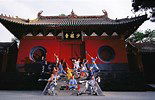
SHAOLIN MARTIAL ART
The first monk who preached Buddhism there was the Indian monk named Buddhabhadra (Fótuóbátuóluó), simply called Batuo by the Chinese. There are historical records that Batuo’s first Chinese disciples, Huiguang and Sengchou, both had exceptional martial skills. For example, Sengchou’s skill with the tin staff is even documented in the Chinese Buddhist canon. After Buddhabadra, another Indian monk, Bhodhidharma( Pútídámó) or simply called Damo by the Chinese, came to Shaolin in 527 AD. In my opinion, the biggest individual influence on China was that of Indian prince and Buddhist monk- Bodhidharma. Many sources describe Bodhidharma, the founder of the Zen school of Buddhisma in China, as a prince of the Pallava dynasty. His teachings are in the book Yijin Jing. Bodhidharma went to China and eventually arrived at the Shaolin monastery in about 526. His first Chinese disciple Huike became the second patriarch of the Chinese Chan Buddhist lineage. According to the legend, Bodhidharma finally took his first disciple when Huike cut off his own arm, showing Bodhidharma that he understood the impermanence of the material world. Since then, the monks of Shaolin have always saluted the Buddha with only one arm. He was also a highly trained martial arts expert.
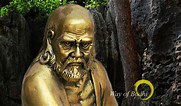
Mythology
The Chinese sense of realism was so intense that there was hardly any mythology in ancient China, and they have produced very few fairy tales of their own. Most of their finest fairy tales were originally brought to China by Indian monks in the first millennium. The Buddhists used them to make their sermons more agreeable and lucid. The tales eventually spread throughout the country, assuming a Chinese appearance conformable to their new environment. For example, the stories of Chinese plays such as A Play of Thunder-Peak, A Dream of Butterfly, and A Record of Southern Trees were of Buddhist origin. The Chinese Dragon may have been the Chinese version of the Seshnag of Lord Vishnu.
Art & Sculpture
Indian art also reached China, mainly through Central Asia, although some works of Buddhist art came by sea. In painting, India influenced China considerably. From the East Chin dynasty to the Tang dynasty there was continuous interrelation between the two countries, and Indian paintings went to China in great numbers and influenced, if not actually displaced Chinese painting in the North. Monks and their retinues, and traders brought Buddha statues, models of Hindu temples, and other objects of art to China. Fa-hien made drawings of images whilst at Tamralipiti. Hsuan-tsang returned with several golden and sandalwood figures of the Buddha; and Hui-lun with a model of the Nalanda Mahavihara. Wang Huan-ts’e, who went to India several times, collected many drawings of Buddhist images, including a copy of the Buddha image at Bodhgaya; this was deposited at the Imperial palace and served as a model of the image in Ko-ngai-see temple. The most famous icon of East Asian Buddhism know as the “Udayana” image was reported to have been brought by Indians. However, this influx of Indian art was incidental and intermittent, and was destined to be absorbed by Chinese art. This combination resulted in a Buddhist art of exceptional beauty. One of the most famous caves – Ch’ien-fo-tung, “Caves of the Thousand Buddhas,” These caves were painted throughout with murals, and were frequently furnished with numerous Buddha statues and sculptured scenes from the Jatakas. Many other caves were initiated in the reign of Toba Wei Emperor, T’ai Wu. Some also contain images of Hindu deities, such as Shiva on Nandi and Vishnu on Garuda.
A Chinese writer tells us that before the introduction of Buddhism there was no sculpture in three dimension in China. But most of the early Chinese Buddhist sculpture was destroyed by an Emperor who was anti-Buddhist. There are, however, the rock sculptures and reliefs at Lo Yang and Lung Men of that period still left intact which show the influence of Indian sculpture on them. There are also sculptures to be found at Yung Kwang which closely resemble the Indo-Greek sculptures of Gandhara.
“Images coming from India were considered holy,” as suggested by Omura, in his History of Chinese Sculpture, significantly underlines the depth of Chinese acceptance of Indian thought.
MUSIC
The Chinese did not regard music as an art to be cultivated outside the temples and theatres. We learn from Chinese writers that Indian music had displaced Chinese music in the seventh century in northern China Buddhist monks who reached China brought the practice of chanting sacred texts during religious rites. Hence, Indian melody was introduced into Chinese music which had hitherto been rather static and restrained. Indian music was so popular in China, that Emperor Kao-tsu (581-595) tried unsuccessfully to proscribe it by an Imperial decree. His successor Yang-ti was also very fond of Indian music.In Chinese annals, references are found of Indian musicians visiting their lands. They reached China from India, Kucha, Kashgar, Bokhara and Cambodia. Even Joseph Needham, the well-known advocate of Chinese cultural and scientific propriety admits, “Indian music came through Kucha to China just before the Sui period and had a great vogue there in the hands of exponents such as Ts’ao Miao-ta of Brahminical origin.” By the end of the sixth century, Indian music had been given state recognition. During the T’ang period, Indian music was quite popular, especially the famous Rainbow Garment Dance melody. A contemporary Chinese poet, Po Chu-yi, wrote a poem in praise of Indian music.“It is a little wonder.”An official publication of the Chinese Republic says, “when a Chinese audience today hears Indian music, they feel that while possessing a piquant Indian flavor it has a remarkable affinity with Chinese music.”
EDUCATIONAL INFLUENCE
As early as 700 B.C., there existed a giant University at Takshashila, located in the northwest region of India. It had 300 lecture halls, laboratories, a library and a towering observatory for astronomical research. Hiuen Tsang, a Chinese traveler, wrote in his diary that it had 10,000 students and 200 professors. China being the only civilized neighbor then, Chinese scholars frequented universities at Nalanda and Takshshila to study and attain knowledge. Famous travelers, such as Hiuen Tsang (b. 604) and I Ching (635-713), both of whom were students at Nalanda University in Bihar. Hiuen Tsang (600-654 AD) stayed at the Nalanda University in the 7th century, and has left an elaborate description of the excellence, and purity of monastic life practiced here. He found Indians “high-minded, upright and honorable”. Hiuen Tsang wrote the Great Tang Records on the Western Regions, an account of his journey to India, which later inspired Wu Chen’en’s Ming dynasty novel Journey to the West. Indeed, the Chinese people of that time were mesmerized by the dedication of Indians for knowledge
LITERATURE, SCRIPTURE AND TRANSLATIONS
China did not have much of its own book written text back then. Chinese translation – the first printed book in the world was the Chinese translation by Kumarajiva (a half Indian half Turkish scholar) of a Buddhist Sanskrit text, Vajrachchedikaprajnyaparamita
The Sanskrit language and literature have influenced China to a certain extent, since the Buddhist Scriptures had to be translated into Chinese. On account of the study of Sanskrit—which, by the way, is the language of the Mahayana Buddhism and not Pali as some people imagine—the Chinese were inspired to invent an alphabetical system. This alphabetical system which has now disappeared was called Ba-lamen Shu or Brahminical writing. ‘Devi Shakuntalam’, the masterpiece of the great Indian dramatist Kalidasa’, was translated into Chinese, and is said to have influenced the Chinese drama.
The great literary activity of the Buddhist scholars naturally had a permanent influence on Chinese literature, one of the oldest in the world. In a recent study a Chinese scholar Lai Mingsays that a significant feature in the development of Chinese literature has been the “the immense influence of Buddhist literature on the development of every sphere of Chinese literature since the Eastern Chin period (317 A.D.).” The Buddhist sutras were written in combined prose and rhymed verse, a literary form unknown in China at the time. The Chinese language when pronounced in the Sanskrit polyphonic manner was likely to sound hurried and abrupt. Consequently, in 489, Yung Ming, Prince of Ching Ling, convened a conference of Buddhist monks at his capital to differentiate between, and define the tones of, the Chinese language for reading Buddhist sutras and for changing the verses. A new theory emerged called the Theory of Four Tones. The introduction into China of highly imaginative literature such as the Mahayana sutras and the Indian epics, like Ramayana and Mahabharata, infused into Chinese literature the quality of imagination which had been hitherto lacking. Taoist literature, such as the book Chuang-tzu, did perhaps show some quality of imaginative power, but on the whole Chinese literature, especially Confuciusnist, was narrow, formal, restricted, and unimaginative.
According to historical records, from the end of Han Dynasty until the end of Song Dynasty, i.e. in the space of 1,000 years from the 2nd to the 12th century A.D, there had been more than 150 scholars who were frontline participants in the gigantic undertaking of translating the Tripitakas into Chinese. History books detail the contributions of 70 monk-scholars from India. The earliest and most celebrated of the masters was the Parthian An Shigao who organised the first translation team after his arrival at Luoyang in AD 148. An-Xuan (AD 181). Tian-ti (AD 254) and An-Faxian (An-Fajin) (AD 281-306) are the other known Parthians who translated Sanskrit works. Kumarajiva is one of the most outstanding stylists of Chinese prose, who translated the Kannon chapter of the Lotus Sutra (AD 561-78). He is the only Indian whose Chinese diction has been hailed over the centuries by Chinese men of letters. There are plenty of other proofs and narrations describing the translations of Indian literature into Chinese.
GRAMMAR
Phrases and words coined by Buddhist scholars enriched the Chinese vocabulary by more than thirty-five thousand words. As the assimilation was spread over a long period of time, the Chinese accepted these words as a matter of course without even suspecting their foreign origin. Even today words of Buddhist origin are widely used in China, for example, poli for glass in the name of many precious and semi-precious stones is of Sanskrit origin. For example, Cha-na, an instant, from kshana; t’a, pagoda, from stupa; mo-li, jasmine from mallika, and terms for many trees and plants are amongst the many thousands of Chinese words of Indian origin. Indian grammar also undoubtedly stimulated Chinese philological study. Chinese script consists of numerous symbols, which in their earliest stage were chiefly pictographic and ideographic. I-tsing,a famous pilgrim, himself a fine scholar of Sanskrit, praises the language and says it is respected in far countries in the north and south, ‘How much more then should people of the divine land (China), as well as the celestial store house (India), teach the real rules of the language.’
Jawaharlal Nehruhas commented: “Sanskrit scholarship must have been fairly widespread in China. It is interesting to find that some Chinese scholars tried to introduce Sanskrit phonetics into the Chinese language. A well-known example of this is that of the monk Shon Wen, who lived at the time of the Tang dynasty. He tried to develop an alphabetical system along these lines in Chinese.”
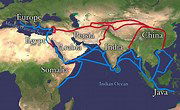
SILK ROAD
The first records of contact between China and India were written during the 2nd century BCE. Buddhism was transmitted from India to China in the 1st century CE. Trade relations via the Silk Road acted as economic contact between the two regions. However, China and India have also had some contact before the transmission of Buddhism. References to a people called the Chinas, are found in ancient Indian literature. The Mahabharata (c. 5th century BCE) contains references to “China“, which may have been referring to the Qin state which later became the Qin dynasty. Chanakya (c. 350-283 BCE), refers to Chinese silks “cinamsuka” (Chinese silk dress) and “cinapatta” (Chinese silk bundle) in his Arthshastra.
In the records of the grand historian, Zhang Qian (d. 113 BCE) and Sima Qian (145-90 BCE) make references to “Shendu”, which may have been referring to the Indus Valley (the Sindh province in modern Pakistan), originally known as “Sindhu” in Sanskrit. When Yunnan was annexed by the Han dynasty in the 1st century, Chinese authorities reported an Indian “Shendu” community living there.
The Cholas maintained good relationship with the Chinese. Arrays of ancient Chinese coins have been found in the Cholas homeland (i.e. Thanjavur, Tiruvarur and Padukkotai districts of Tamil Nadu, India).Under Rajaraja Chola and his son Rajendra Chola, the Cholas had strong trading links with Chinese Song dynasty. The Chola navy conquered the Sri Vijaya Empire of Indonesia and Malaysia and secured a sea trading route to China.
TRADE AND COMMERCE
The chronicle ‘Sung-chu’ states that all the precious things of land and water came from India. Gems made of rhinoceros’ horns and king-fishers’ stones, serpent pearls and asbestos cloth, they are being innumerable varieties of these curiosities, were imported into China from India. According to the Chin-hsi-yu-chiu-t’u rare stone came to China from the countries of Chi-pin (Gandhara or Kashmir). Moreover, po-tie ( a fine textile, probably muslin) was produced in India; and as early as A.D. 430 Indian po-tie was sent to China from Ho-lo-tan or Java. In A.D. 519, King Jayavarman of Fu-nan (Kamboja/Cambodia) offered saffron with storax and other aromatics to the Chinese court. Laufer also suggests that in the sixth century saffron was traded from India to Cambodia. In the T’ang Annals, India in her trade with Cambodia and the interior orient, “export to those countries diamonds, sandalwood and saffron.” India was a good market for Chinese silk. Kalidasa mentions this silk fabric (Chinamsuka) as one of the most fashionable textiles among the richer sections of society. Silk and silk-products were also much demanded luxury articles even in the reign of Harshavardhana. The countries lying on the route from Kashgar (India) to China, were collectively called by historians and geographers as ’Ser-India’, first imbibed Indian culture and then developed into important trade centers.
Chinese silk, Chinamsuka, and later porcelain were highly prized in India, and Indian textiles were sold in southwest China. The similarity between the Chinese and Indian words for vermilion and bamboo, ch’in-tung and ki-chok, and sindura and kichaka, also indicates commercial links. At least by the fifth century, India was exporting to China wootz steel (wootz from the Indian Kanarese word ukku), which was produced by fusing magnetic iron by carbonaceous matter.
Sugar Refining– Sugarcane was originally from tropical South Asia and South-East Asia. The process of producing crystallized sugar from sugarcane was discovered by the time of the Imperial Guptas, and the earliest reference of candied sugar comes from India. The process was soon transmitted to China with traveling Buddhist monks. Chinese documents confirm at least two missions to India, initiated in 647 CE, for obtaining technology for sugar-refining. Each mission returned with results on refining sugar. India invented brown sugar, and Emperor Taizong sent Wang Xuang immediately to Mahabodhi monastery to get the technology.
Sandalwood reached China and was called there Xiangyao.
Black Pepper entered China by the name hujiao.
KUSHAN CONNECTION
Knowledge of his hold over Central Asia is less well established. The Book of the Later Han,Hou Hanshu, states that general Ban Chao fought battles near Khotan with a Kushan army of 70,000 men led by an otherwise unknown Kushan viceroy named Xie in 90 AD. Though Ban Chao claimed to be victorious, forcing the Kushans to retreat by use of a scorched-earth policy, the region fell to Kushan forces in the early 2nd century. As a result, for a period (until the Chinese regained control c. 127 AD) the territory of the Kushans extended for a short period as far as Kashgar, Khotan and Yarkand, which were Chinese dependencies in the Tarim Basin (modern Xinjiang). Several coins of Kanishka have been found there. It is said that, in recognition for their support to the Chinese, the Kushans (referred to as Da Yuezhi in Chinese sources) requested, but were denied, a Han princess, even though they had sent presents to the Chinese court. In retaliation, they marched on Ban Chao in 90 CE with a force of 70,000, but were defeated by the smaller Chinese force. The Yuezhi retreated and paid tribute to the Chinese Empire. (Later, during the Yuanchu period, 114-120 CE, the Kushans sent a military force to install Chenpan, who had been a hostage among them, as king of Kashgar).
Controlling both the land (the Silk Road) and sea trade routes between South Asia and Rome seems to have been one of Kanishka’s chief imperial goals. In the reign of Kanishka bilateral relations entered a new phase in economic, political and cultural domains. Kanishka, as the greatest of Kushan emperors, symbolised his international status by the adoption of four titles: Devaputra or son of Heaven from China, Shaonana Shao or King of Kings from Persia, Kaisara or Caesar from Rome, and Maharajadhiraj of India, signifying the imperial dignity of the four superpowers of the time: China, Persia, Rome, and India. He played a major role in the dissemination of Buddhism to China. The policy of cultural internationalism enunciated by Ashoka found its prime efflorescence in the reign of Kaniska. Xuanzang relates that Kanishka defeated the Chinese in Central Asia and Chinese princes were sent as hostages. Territories were allotted to them in Punjab which were known as Cina-bhukti, an area that Xuanzang visited in the seventh century. Now it is a village Chiniyari near Amritsar, and Chiniot from Cinakota. The Chinese princes introduced two new fruits to India: the peach and the pear. They came to be known respectively as cinani and cinarajaputra which means “Peach the Chinese Princess” and “Pear the Chinese Prince.”
CHESS
As a strategy board game played in China, chess is believed to have been derived from the Indian chaturanga. Chaturanga was transformed into the game xiangqi where the pieces are placed on the intersection of the lines of the board rather than within the squares. The object of the Chinese variation is similar to chaturanga. In China the first indisputable sources appeared only around 800 CE. “The King of Kannauj had sent the game of chess to the court of Sasanian King Kusrau I Anshirvan (531-579 CE).
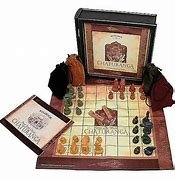
ASTRONOMY
There is also some evidence that works on Indian astronomy were in circulation in China well before the T’ang period. In the annuals of the Sui dynasty, numerous Chinese translations of Indian mathematical and astronomical works are mentioned, such as Po-lo-men Suan fa (The Hindu Arithmetical rules) and Po-lo-men Suan King. These works have vanished, and it is impossible to assess the degree of their influence on Chinese sciences. However, there is definite evidence of Indian influence on Chinese astronomy and calendar studies during the T’ang dynasty. In 684 CE one of the members of the Gautama school, Lo presented a calendar, Kuang-tse-li, which has been in use for three years, to the Empress Wu. Later, in 718 CE, another member of the school, Hsi-ta (Siddhartha), presented to the Emperor a calendar, Chiu-che-li, which was almost a direct translation of an Indian calendar, Navagraha Siddhanta of Varahamihira,and which is still preserved in the T’ang period collection. It was in use for four years. In 729 CE Siddhartha compiled a treatise based on this calendar which is the greatest known collection of ancient Chinese astronomical writings. This was the first time that a zero symbol appeared in a Chinese text, but, even more important, this work also contained a table of sines, which were typically Indian. I-hsing (682-727 CE) was associated with the Kumara school and was much influenced by Indian astronomy. Indian influence can also be seen in the nine planets he introduced into his calendar, Ta-yen-li. The nine planets included the sun, moon, five known planets, and two new planets, Rahu and Ketu, by which the Indian astronomers represented the ascending and descending nodes of the moon.
PRAYER FLAGS
The Buddhist Sutras, written on cloth in India, were transmitted to other regions of the world. These sutras, written on banners, were the origin of prayer flags. Legend ascribes the origin of the prayer flag to the Shakyamuni Buddha, whose prayers were written on battle flags used by the devas against their adversaries, the asuras. The legend may have given the Indian bhikku a reason for carrying the ‘heavenly’ banner as a way of signifying his commitment to ahimsa. This knowledge was carried into Tibet by 800 CE, and the actual flags were introduced no later than 1040 CE, where they were further modified. The Indian monk Atisha(980-1054 CE) introduced the Indian practice of printing on cloth prayer flags to Tibet.
THE INCENSE CLOCK
The incense clock is a timekeeping device used to measure minutes, hours, or days. Incense clocks were commonly used at homes and temples in dynastic times. Although popularly associated with China the incense clock is believed to have originated in India, at least in its fundamental form if not in function. Early incense clocks found in China between the 6th and 8th centuries CE—the period it appeared in China all seem to have Devanāgarī carvings on them instead of Chinese seal characters. Incense itself was introduced to China from India in the early centuries CE, along with the spread of Buddhism by travelling monks. Edward Schaffer asserts that incense clocks were probably an Indian invention, transmitted to China, which explains the Devanāgarī inscriptions on early incense clocks found in China. Silvio Bedini on the other hand asserts that incense clocks were derived in part from incense seals mentioned in Tantric Buddhist scriptures, which first came to light in China after those scriptures from India were translated into Chinese, but holds that the time-telling function of the seal was incorporated by the Chinese.
ACCUPUNCTURE
In modern day acupuncture lore, there is recounted a legend that the discovery of the vital bodily points began within India as a result of combative research studies undertaken by the Indian kshatriya warriors in order to discover the vital (and deadly) points of the body which could be struck during hand-to-hand encounters. It is said that they experimented upon prisoners by piercing their bodies with the iron and stone “needles’ daggers called Suci daggers, common to their infantry and foot soldiers, in order to determine these points. This Chinese legend reflects and complements the traditional Indian account of its origins, where it is said that in the aftermath of battles it was noticed that sometimes therapeutic effects arose from superficial arrow or dagger wounds incurred by the Khastriya in battle.
In Korean academics, students are correctly told that acupuncture originated in India. An ancient Sanskrit text on acupuncture preserved in the Ceylonese National Museum at Colombo in Sri Lanka.
CATARACT SURGERY AND MEDICINES
Chinese medicine, was influenced by Ayurveda, and similarities include the extensive use of natural herbs.
According to Terence Duke, “Many Buddhists were familiar with the extensive knowledge of surgery common to Indian medicine and this aided them both in spreading the teachings and in their practice of diagnosis and therapy. Surgical technique was almost unknown within China prior to the arrival of Buddhism.” The renowned Buddhist teacher Nagarjuna is said to have translated at least two traditional works dealing with healing and medicines in the first centuries of our era. A section of his Maha-Prajnaparamita Sutra is quoted by the Chinese monk I Tsing in his commentary upon the five winds (Chinese: Wu Fung; Japanese: Gofu). This description enables us to see that the breath Hatha Yoga termed pranais in fact forming only part of a wider system known in Buddhism.” (source: *The Boddhisattva Warriors: The Origin, Inner Philosophy, History and Symbolism of the Buddhist Martial Art Within India and China- p.139-145).
Indian medical texts were widely known in Central Asia, where parts of the original texts on ayurveda have been found, as well as numerous translations. The T’ang emperors patronized Indian thaumaturges (Tantric Yogis) who were believed to possess secret methods of rejuvenation. Wang Hsuan-chao, who returned to India after the death of King Harsha had been charged by the Chinese Emperor in 664 to bring back Indian medicines and physicians.
Considering that Indian medicine, especially operative surgery, was highly developed for the time, it is not surprising that the Chinese, like the Arabs, were captivated by Indian medical skills and drugs. Castration was performed by Chinese methods but other surgical techniques, such as laparotomy, trepanation, and removal of cataracts, as well as inoculation for smallpox, were influenced by Indian practices.
Cataract surgery was known to the Indian physician Sushruta (3rd century CE). In India, cataract surgery was performed with a special tool called the Jabamukhi Salaka, a curved needle used to loosen the lens and push the cataract out of the field of vision. The eye would later be soaked with warm butter and then bandaged. Though this method was successful, Sushruta cautioned that cataract surgery should only be performed when absolutely necessary. Greek philosophers and scientists traveled to India where these surgeries were performed by physicians. The removal of cataract by surgery was also introduced into China from India.
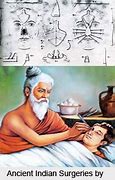
SCIENCE AND MATHEMATICS
Vippasana teacher S.N. Goenka describes Buddhadharma as a ‘pure science of mind and matter’. He claims Buddhism uses precise, analytical philosophical and psychological terminology and reasoning. Goenka’s presentation describes Buddhism not so much as belief in a body of unverifiable dogmas, but an active, impartial, objective investigation of things as they are. What is generally accepted in Buddhism is that effects arise from causation. The Buddha explains the reality of things in terms of cause and effect. Along with Buddhism, Indian science was sent to China.
The table of sines written by the Indian mathematician Aryabhatta was translated into Chinese astronomical and mathematical treatise of the Kaiyuan era. Gautama Siddha, who was born in Chang’an had his family roots in India. He introduced the Indian numerals including 0 (Zero), and also the Indian navagraha calendar to China.
Some Recent Bonhomie Moments
It was during the second Sino-Japanese war in 1938, the great Subhash Chandra Bose responded to the Chinese leadership then, for medical assistance, by sending a team of five doctors, which included Dr. Dwarakanath Shantaram Kotnis (Ke Dihua, Chinese), and an ambulance, by collecting donations from public. Four out of the five returned back. Dr. Kotnis married a Chinese nurse and had a son out of the wedlock. He died in China on 9th December 1942, at the young age of 32 years. He is continued to be revered by the Chinese, along with Dr. Norman Bethuna of Canadian origin, for their selfless and humane service to their country. In April 2005, both their graves were covered completely in flowers donated by the Chinese people during the Qingming Festival, a day used by the Chinese to commemorate their ancestors.
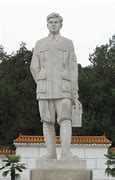
I would also like to mention that, the Indian government under Pt. Jawaharlal Nehru, sent Rammanohar Sinha (Indian artist, and best known for his illustrations in the original final manuscript of Constitution of India) to China between 1957 and in 1959 to “establish a direct cross-cultural and inter-civilization bridge”. While in China he networked with great artists and political leaders, which may have helped in reducing controversy over the disputed Sino-India border. Rammanohar Sinha also spread Indian art and personally mastered both Chinese painting and lacquer work. You all know the about how idiotically India gifted its offered place in the UN Security Council to China, just show India’s large-heartedness and friendship. You all must be aware of the ‘Panchsheel and Hindi-Chini Bhai-Bhai’ agreement and slogan by Nehru to appease communist Mao, who was the main reason behind the destruction of rich Chinese culture and heritage in order to bring in the ‘utopian social order.’
Chinese have always been proud of their ancient culture. But the ‘pillars and beams’ of their cultural structure were laid by Indians. With such religious and cultural influence throughout history, Chinese have earned and learned a lot from India till about a thousand years ago. Sadly the barbaric Islamic conquerors and looters attacked, looted and devastated Indian culture, followed by colonial British who methodically distorted Indian history and derided the Indian mentally. These events made India forget its past greatness and richness of its culture. If you see the economy of India and China, you will realize how great ancient Indians were until the Islamic intrusions into India and how brutally the economy was raped by the British Raj. Also, when China was about to collapse, it was Indian culture which probably helped them to prosper.
Recently a state-run Chinese media published that:
“The civilization of both China and India originate from Himalaya and Tibet plateau. And there was no conflict during their historical change that lasted thousands of years. Sages brought India’s ancient culture to China. After the Han dynasty (206BCE-220CE), China faced collapse. Buddhism contributed greatly to China’s unification. Today Indians have to come to China for documents if they want to know their cultural past.”
Finally let me quote Hu-Shih, one of the most famous modern Chinese philosophers, to conclude, “India conquered and dominated China culturally for 20 centuries without ever having to send a single soldier across her border.”
DISCLAIMER: The author is solely responsible for the views expressed in this article. The author carries the responsibility for citing and/or licensing of images utilized within the text.
